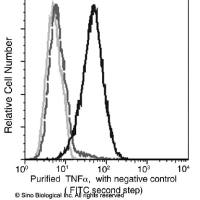6-OHDA Toxin Model in Mouse
互联网
互联网
相关产品推荐

Mouse Reactive Alzheimer's Disease Model Microglia Phenotyping IF Antibody Sampler Kit
¥500

TNF-alpha / TNFA / TNFSF2 Antibody, Mouse MAb | TNF-alpha / TNFA / TNFSF2 鼠单抗
¥800

Shiga toxin II subunit B 兔多抗 | Enterohemorrhagic E. coli (EHEC) stx2B Antibody, Rabbit PAb, Antigen Affinity Purified
¥800

Oxidopamine hydrochloride (6-OHDA hydrochloride) 是神经递质多巴胺 (neurotransmitter dopamine) 拮抗剂,是一种广泛使用的神经毒素,可选择性地破坏多巴胺能神经元。
¥600

Tau Mouse Model Neuronal Viability IF Antibody Sampler Kit
¥500
相关问答

